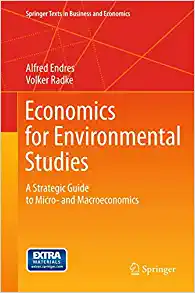Question
1- What costs do you think comprise marginal costs in the short run in this plant?, So we look at a manager's decision to actually
1- What costs do you think comprise marginal costs in the short run in this plant?,
So we look at a manager's decision to actually decide what output to make, we can set up the scenario of aluminum smelting plant. So we've graphed on here the aluminum smelting marginal cost. And so if we run a plant for a certain length of time with one or two shifts, we end up with the cost of being $1,140 per ton.
If we add another shift, and we need to, of course, add production to the plant, we might actually need to add a shift to that. And that's going to raise our marginal cost to $1,300 per ton. And so instead of having a marginal cost curve that's a smooth line, we end up with a step function, because we either add a shift or don't add a shift to the plant.
So it presents an interesting case about a manager then trying to decide how to maximize profits and actually how to make a short run output decision to match up the marginal cost with the marginal benefit in this case. So how should the manager actually allocate the plant's profit maximizing output? What type of shift should they run? Should they run two shifts or three shifts? And that's going to depend on our marginal cost.
It's also going to depend, of course, on the price that we get for the aluminum once we manufacture the aluminum and smelt it. Recall that the smelting short run marginal cost depends on whether we run the two shifts or three shifts a day, and that's going to make our variable marginal cost a decision point in deciding how much we actually produce from the plant.
So we look at the typical price. We can look at the marginal cost and then look at the market price, keeping in mind if a perfectly competitive market, we become price takers. And we're going to use the market price as a given input. And we can look then where the market price intersects with the marginal cost curve.
So in the short run, the plant basically should manufacture 600 tons per day where the marginal cost intersects with the price if the price is actually less than $1,300 per ton. Now if the price in the marketplace goes up now, it may be beneficial for us to add a third shift into the plant, only though if the price in the market is high enough that we make money on that third shift. So if the price is greater than $1,300 per ton of aluminum, then we might want to add an overtime shift, even though it might cost us more, because we're making at least incrementally more money on the third shift than it's actually costing us to run the plant.
So we want to take a step back and think about the variable costs and how we actually construct this marginal cost curve. It's very important for a manager to understand the marginal costs that go into the production process, and a manager monitoring these process needs to keep track of those costs and make sure we include the right costs. So what cost do you think go into the marginal cost of producing aluminum in this aluminum smelting plant?
2- What would the price per pound be if world production is 6 million metric tons?
3 -The world of taxi transportation is changing a lot. Please define how and when this will affect pricing.
Step by Step Solution
There are 3 Steps involved in it
Step: 1

Get Instant Access to Expert-Tailored Solutions
See step-by-step solutions with expert insights and AI powered tools for academic success
Step: 2

Step: 3

Ace Your Homework with AI
Get the answers you need in no time with our AI-driven, step-by-step assistance
Get Started


